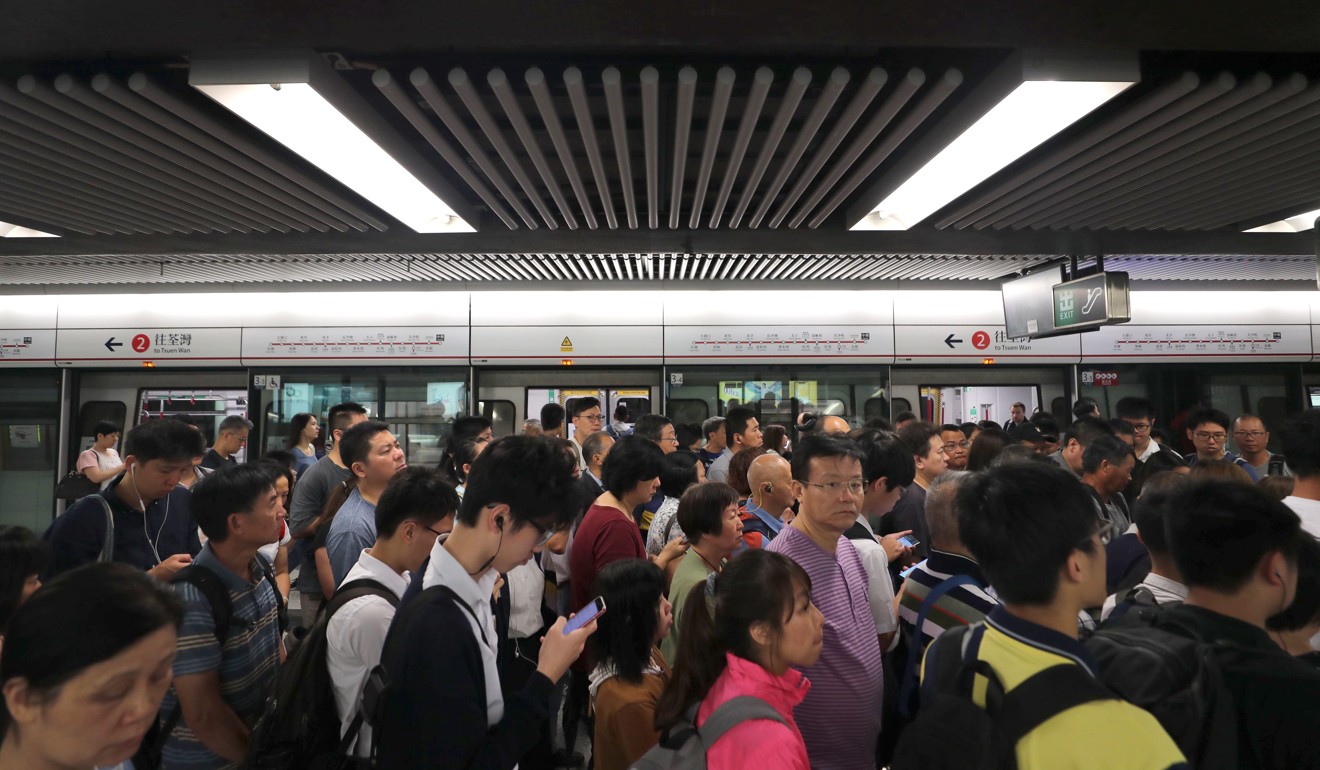
Hong Kong slowly returns to normal after protests, but public told to allow extra time for travel
- Police requested trains running on the Island line and South Island line do not stop at Admiralty, but services returned to normal in the afternoon
- Roads in the area are slowly reopening after day of protests
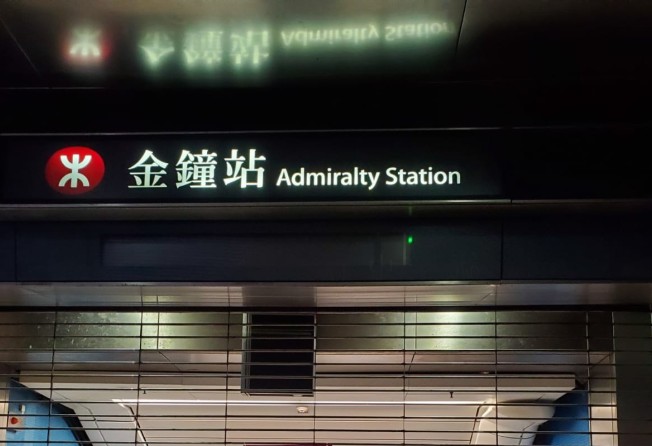
Hong Kong was slowly returning to normal on Thursday after clashes between police and protesters angry at the government’s determination to press ahead with its extradition bill.
The city was brought to a standstill on Wednesday as thousands of people took to the streets and surrounded the government’s headquarters ahead of a scheduled second reading of the legislation.
Protesters slipped away overnight, leaving roads they had occupied empty except for piles of rubbish and bricks.
In the early hours, police began to reclaim the streets, and opened Harcourt Road, Queensway and Hennessy Road.

Travellers were still told to allow extra time for their journeys on Thursday morning, and trains initially did not stop at Admiralty station, which closed on Wednesday at the height of the disturbances, which police referred to as a riot.
The station was reopened, with services back to normal, from 2.14pm.
Travellers also had to contend with heavy rain, as the Hong Kong Observatory issued an amber rain signal at 8.45am, an hour after it issued a thunderstorm warning.
Several protesters returned to the scene around Admiralty to pick up leftover supplies that had been left on Harcourt Road such as goggles, masks and first aid kits.
Ryan Cheng, an 18-year-old secondary school graduate, said they would take the supplies in case there were further protests.
“Many of the supplies are brand new,” he said. “There is no reason that we should waste them.”
Cheng said he did not know whether protests would continue on Thursday, with it still unclear if the Legislative Council, which postponed Wednesday’s debate, would try to hold it again.
Cheng joined the protest around Central at 9.30pm on Wednesday and left at 1.30am. He said protesters there left without clashing with police.
“We all knew that it was more important to stop the meeting from happening,” he said. “There was no point clashing with the police at night.”

Pacific Place, a major Admiralty mall in which protesters took shelter during the clashes, was closed in the morning but gradually reopened in the afternoon.
Citic Tower, opposite the Legco complex, will also remain closed, staff said.
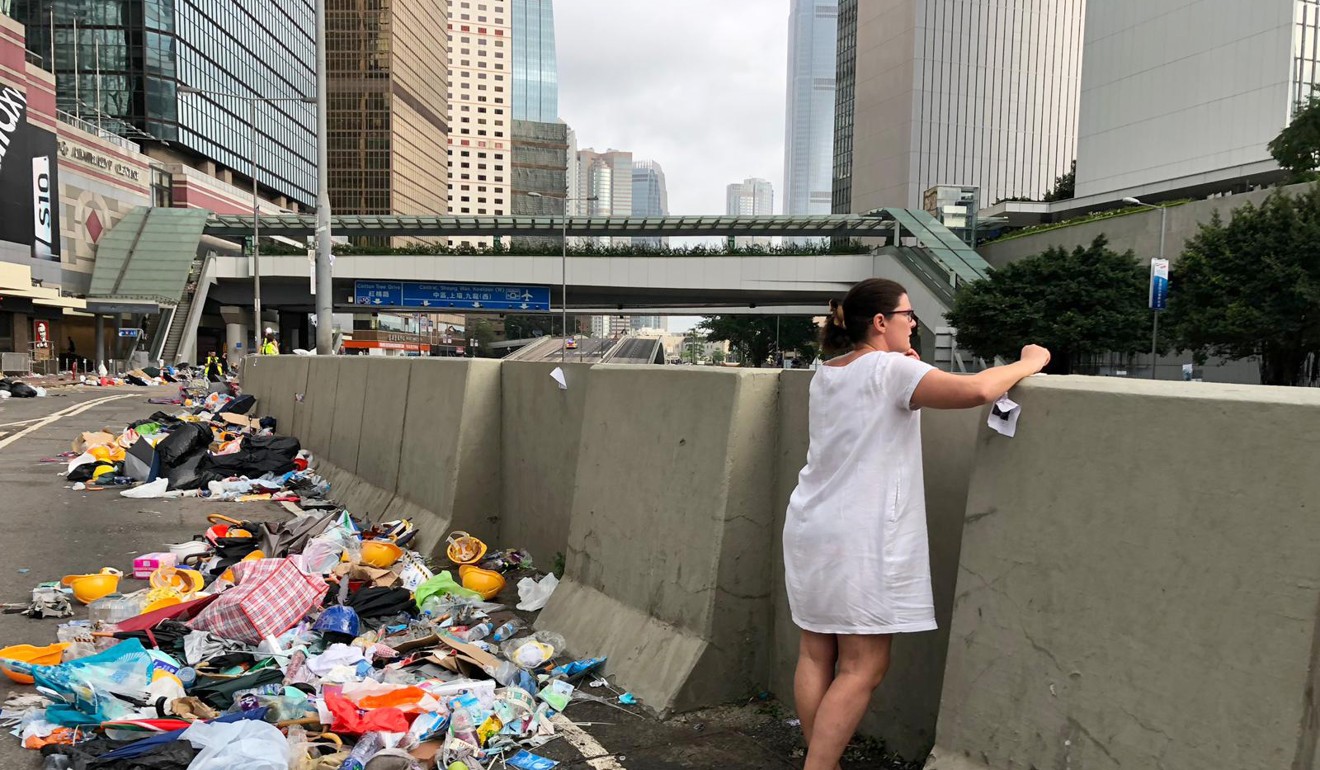
In the early hours of Thursday, traffic in Admiralty and Central had largely returned to normal. Most roads, including Hennessy Road and Queensway, had reopened.
Police cleared the last major blockade on Harcourt Road near to the PLA garrison.
The protesters did what they had to do; what they believed to be right for Hong Kong,” he said. “I don’t mind spending a few more minutes on public transport because of that
At about midnight, protesters started to leave the roads they had occupied for a full day, and left behind countless broken umbrellas, masks, goggles, bottled waters and other items.
Piles of bricks were found near the Legislative Council, having been dug up the day before. One worker noted all bricks had been glued and difficult to separate.
“[The protesters] are quite skilful, even I can’t do that myself,” he said.
A man who stayed into the early hours of Thursday said he was a bit disappointed that almost every protester had gone.
“If they had stayed through the night, many of the roads in Central and Admiralty would remain blocked, and traffic paralysed,” he said.
He said he did not know how the fight against the extradition bill would go on, but was not prepared to give up easily.
Another man said leaving was the right thing to do.
“I have been telling other people to leave, not because I am a mole, but because it’s not safe to still stick around when there are hardly any protesters left,” he said.
“If the police want to cause you trouble or even arrest you, they can easily do so because there are no other protesters here to protect you.”
Clashes broke out outside government headquarters and the Legislative Council complex as protesters attempted to derail the second reading of the extradition bill, forcing the nearby Admiralty station to close on Wednesday night.
In the aftermath of the protest, during which police fired rubber bullets and tear gas, Admiralty was a rubbish-strewn mess and cleaning crews worked to remove the debris with the help of the police. Officers barricaded the entrance to Tim Wa Avenue and stood guard nearby.

The Wan Chai exit of the Wan Chai Bypass also remained closed.
Meanwhile, 16 New World First Bus and Citybus routes were suspended, while 80 other routes would be diverted, and passengers were advised to check the bus companies’ social media for updates.
The suspended routes were: 13, 15C, 18, 40M, 70A, H1, H1A, H2, W1, X15, X15R, 5X, 12, 12M, 260, and 788.
At 3pm, both bus companies said all routes had resumed normal operations, but some were still diverted.
Government headquarters were closed on Thursday and Friday for security reasons, officials said.
Zoe Chan, an administrator in her 40s, lives in Wan Chai and normally takes the 930 bus to work in Tsuen Wan. On Thursday she was forced to take the MTR, as the bus had been suspended, adding 15 minutes and a longer walk to her journey.
“It’s a little inconvenient for me, I have a hip problem,” Chan said.
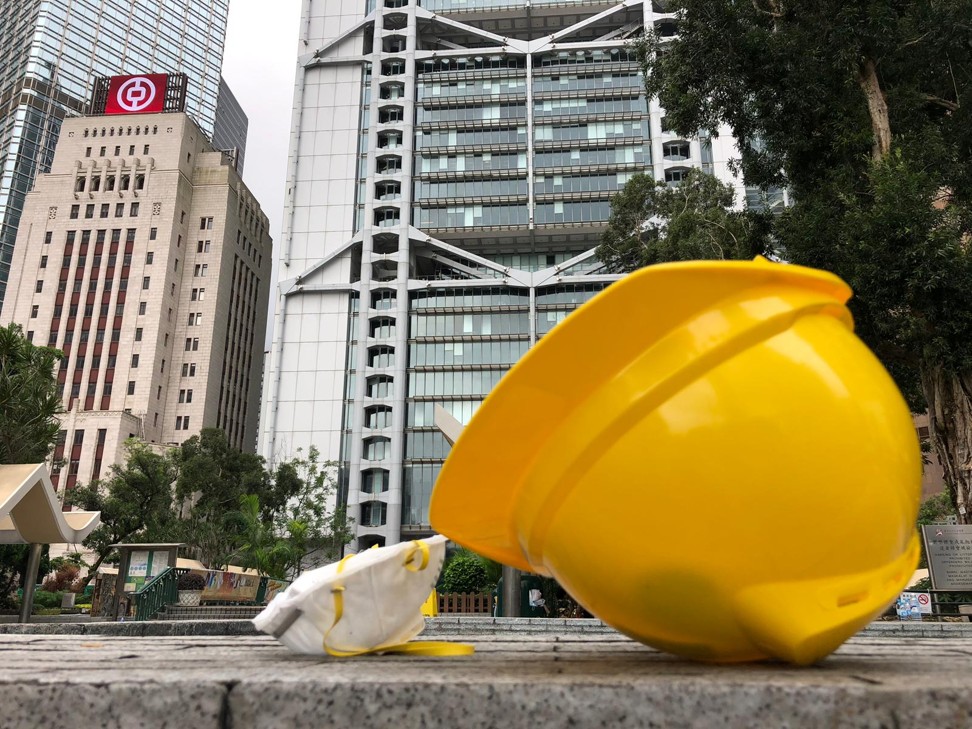
“But I admire the young people who protested. They were fighting for Hong Kong on behalf of those who can’t.”
In Kennedy Town, hundreds of passengers queued up outside the station to take free shuttle buses to Ocean Park.
A construction worker on his way to work, who gave his name as Mr Lo, had waited for eight minutes before boarding the bus. He said he was broadly satisfied with the MTR Corp’s arrangement and was not too bothered about the extra travelling time.
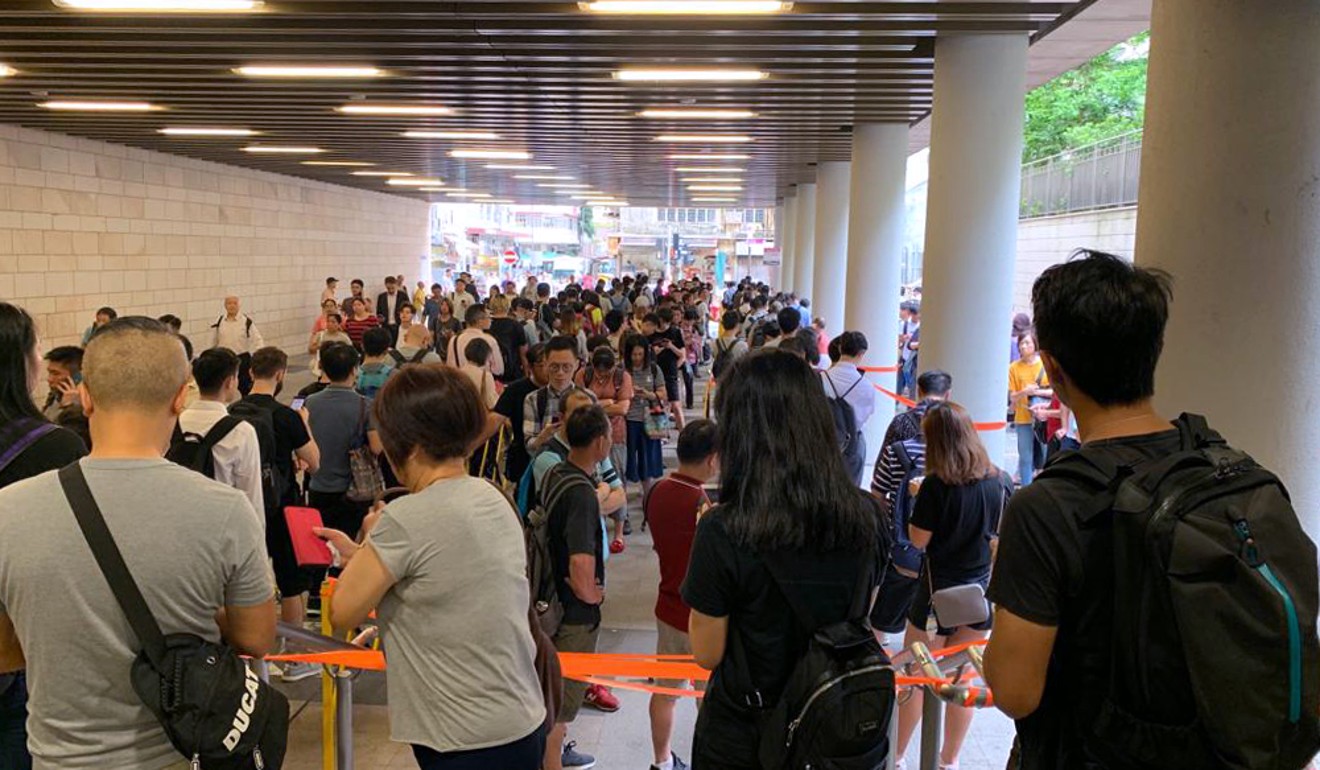
“The protesters did what they had to do; what they believed to be right for Hong Kong,” he said. “I don’t mind spending a few more minutes on public transport because of that.”
Another passenger, Mrs Wong, spent 50 minutes more than usual travelling from her home in North Point to Ocean Park to visit a friend.
“I am running late for breakfast with my friend, and the amber rainstorm signal is on,” she said. “I would have just come another day if I had known it would be such a hassle to come here.”
Additional reporting by Phila Siu, Shirley Zhao, Linda Lew and Victor Ting